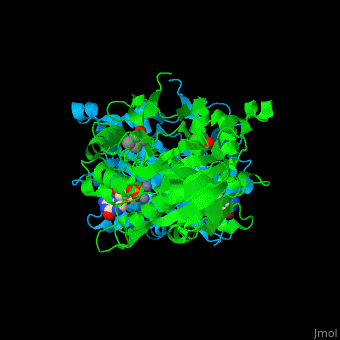Function
- 3'5'-cyclic nucleotide phosphodiesterases (PDE) are enzymes that hydrolyze the 3',5'-phosphodiester bond in cyclic nucleotides (e.g., cAMP, cGMP). PDEs operate in concert with cyclases (adenylate cyclase or guanylate cyclase) to regulate the cellular concentration of cyclic nucleotides. cAMP and cGMP serve as intracellular second messengers for a multitude of signaling pathways, including sensory transduction, hormone signaling, and neurotransmitter signaling. In mammals, 11 distinct families of PDEs have been identified which share a highly homologous catalytic domain (pfam:00233, PDEase_I).
- Tyrosyl-DNA PDE hydrolyzes phosphodiester bond at the 3’-end of DNA linked to a tyrosyl moiety.
- Glycerophosphodiester PDE hydrolyzes various glycerophosphodiesters to release glycerol-3-phosphate and alcohol.
- PDE 1 is calcium/calmodulin dependent[1].
- PDE 2 is cGMP-dependent 3’,5’-cyclic PDE[2].
- PDE 3 is expressed in vascular smooth muscle cells[3].
- PDE 4a-d are cCMP-specific and regulate cAMP levels and signaling. PDE4s are expressed differently in different cell types but posses similar catalytic and regulatory domains.
- PDE 5 is cGMP-specific.
- PDE 6 is the primary effector of retinal phototransduction[4]. See details in User:Rick H. Cote/PDE6. See Rhodopsin.
- PDE 7 is expressed in lymphocytes and certain brain regions and is involved in pre inflammatory processes[5].
- PDE 8 regulates chemotaxis of activated lymphocytes[6].
- PDE 9 regulates cGMP levels[7].
- PDE 10 is expressed in striatum[8].
- PDE 12 is a negative regulator of the innate immune response[9].
- PDE b1 see T. brucei Phosphodiesterase B1.
- U6 snRNA PDE trims the poly(U) tract of the last nucleotides in the pre-U6 snRNA molecule[10].
- Diguanylate PDE hydrolyzes c-di-GMP into linear dimeric GMP[11].
Specific phosphodiesterases are in C-di-GMP specific phosphodiesterases.
Relevance
PDE4 inhibitors are used in the treatment of chronic inflammatory diseases[12]. PDE5 inhibitors like viagra are used for premature ejaculation[13]. PDE7 inhibitors are tested as potential drugs for neurological disorders. PDE10 inhibitors are tested as modifiers of Parkinson disease[14].
Structural highlights
The yeast PDE 1 is located between 2 monomers and contains [15]. Water molecules shown as red spheres.
3D Structures of phosphodiesterase
Phosphodiesterase 3D structures

